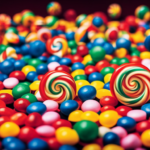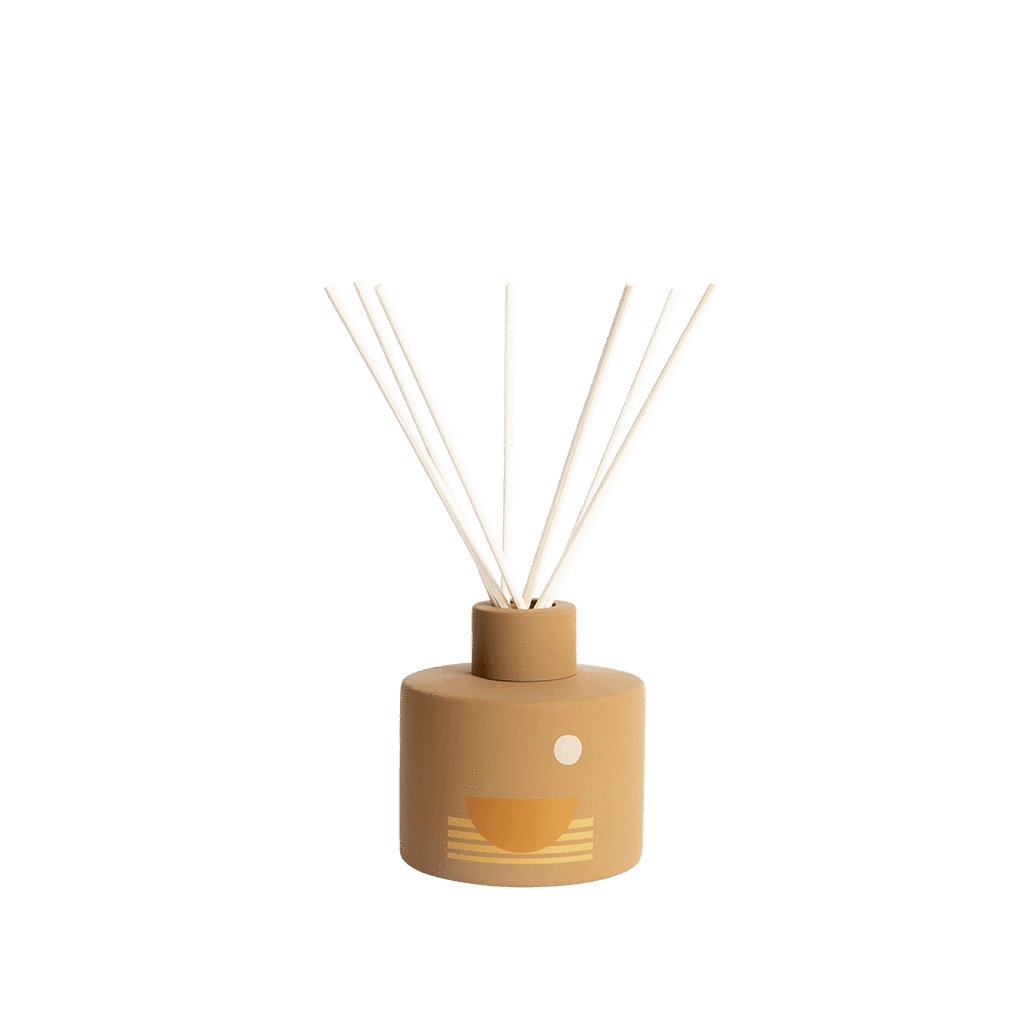What is the sweet dessert with the highest sugar content?
Have you ever wondered which sugary treat is the ultimate indulgence? Brace yourself for a sweet showdown as we delve into the sugar-filled world of candies.
In this article, we will explore the sugar content of popular candies such as Gummy Bears, Chocolate Bars, Sour Patch Kids, Skittles, Starburst, Reese’s Peanut Butter Cups, M&M’s, Kit Kat, and Snickers. Prepare to be amazed by the eye-opening facts that lie beneath those enticing wrappers.
I will guide you through this sugar-loaded journey, providing you with objective and evidence-based information. I’ll reveal the sugar content of each candy, considering both the serving size and the amount of sugar in each serving. Armed with this knowledge, you’ll be able to make informed decisions about your sweet indulgences.
Get ready to satisfy your curiosity and stay tuned as we uncover which candy truly reigns supreme in the realm of sugar. Let the sugar showdown begin!
Key Takeaways
- Gummy bears have a high sugar content of 22 grams per serving and are made of sugar, corn syrup, and gelatin.
- Chocolate bars such as Hershey’s, Snickers, and Kit Kat contain significant amounts of sugar and can be high in sugar and calories.
- Sour Patch Kids are loaded with sugar and artificial ingredients, made of sugar, corn syrup, and water.
- Skittles have 32 grams of sugar per serving and contain sugar, corn syrup, and fruit juice.
Gummy Bears
You won’t believe how much sugar is packed into those irresistible gummy bears! Gummy bear flavors vary from classic fruity options like cherry, orange, and strawberry to more exotic choices like pineapple and watermelon. However, regardless of the flavor, gummy bears all have one thing in common – a high sugar content.
These chewy treats are notorious for their sweetness, making them a favorite among candy lovers. When it comes to nutritional value, gummy bears are not exactly a healthy choice. They’re primarily made of sugar, corn syrup, and gelatin, with minimal nutritional benefits.
A single serving of gummy bears, approximately 17 pieces, contains around 22 grams of sugar. To put it into perspective, that’s almost as much sugar as a can of soda! Consuming excessive amounts of sugar can have negative effects on your health, such as weight gain, tooth decay, and an increased risk of chronic diseases like diabetes and heart disease.
It’s important to enjoy gummy bears in moderation, as part of a balanced diet. Now, let’s move on to another popular candy option – chocolate bars.
Chocolate Bars
Indulging in chocolate bars means surrendering to a delightful combination of rich cocoa and a sweet, sugary treat. However, it is important to be aware of the health effects of consuming chocolate bars. While they can be a delicious indulgence, they are also high in sugar and calories. Consuming too much sugar can lead to weight gain, tooth decay, and an increased risk of chronic diseases such as diabetes and heart disease.
When comparing different chocolate bar brands, it’s important to consider the sugar content. Some brands may have higher levels of added sugars, while others may use alternative sweeteners or have lower sugar content overall. I have created a table below to illustrate the sugar content in popular chocolate bar brands:
| Brand | Sugar Content (per serving) |
|---|---|
| Hershey’s | 24g |
| Snickers | 20g |
| Kit Kat | 21g |
As you can see, all of these chocolate bars have a significant amount of sugar. It’s important to enjoy them in moderation and make healthier choices when possible. Now, let’s move on to discussing the next candy, sour patch kids, and their sugar content.
Sour Patch Kids
Sour Patch Kids are known for their tantalizingly sour and irresistibly sweet flavor that leaves your taste buds begging for more. But how are they made? These popular candies start off as a mixture of sugar, corn syrup, and water. This mixture is heated until it reaches a high temperature, creating a thick syrupy consistency.
The syrup is then poured into molds and left to cool and harden. Once the candies have set, they are coated in a sour sugar mixture, giving them their signature tangy taste.
When it comes to health benefits, unfortunately, Sour Patch Kids don’t offer much. They’re loaded with sugar and artificial ingredients, making them a treat that should be enjoyed in moderation. However, there’s one silver lining – they’re fat-free! So if you’re watching your fat intake, indulging in a few Sour Patch Kids won’t hurt too much.
Now, let’s move on to the next candy on our list – Skittles.
Skittles
Taste the rainbow with Skittles, the colorful bite-sized candies that burst with fruity flavors. Skittles are a popular choice among candy lovers, but it’s important to be aware of their nutritional value and ingredients.
Each serving of Skittles, which is about 40 grams, contains 160 calories, 36 grams of carbohydrates, and 32 grams of sugar. The main ingredients in Skittles include sugar, corn syrup, hydrogenated palm kernel oil, and fruit juice. Skittles come in a variety of flavors, such as strawberry, orange, lemon, green apple, and grape. Each flavor has its unique taste, making Skittles a fun and diverse candy to enjoy. However, it’s worth noting that the sugar content varies slightly between flavors, with lemon and green apple having slightly less sugar compared to the other flavors.
Transitioning to the next section, let’s now explore another popular candy, Starburst, and see how it compares in terms of sugar content and flavors.
Starburst
If you’re curious about the sugar content and flavors of Starburst, let’s delve into the truth of a theory and explore how it compares to Skittles.
Starburst, known for its chewy texture and vibrant colors, offers a variety of flavors that are sure to satisfy any sweet tooth. From the classic strawberry and cherry to the tropical paradise of pina colada and mango melon, Starburst has something for everyone. But what sets Starburst apart is its popular flavor combinations. The tangy fusion of cherry and lime, or the refreshing blend of strawberry and lemon, create a delightful burst of taste in every bite.
With each Starburst candy containing approximately 2.4 grams of sugar, it falls on the higher end of the sugar spectrum compared to Skittles.
Now that we’ve explored the flavors and varieties of Starburst, let’s move on to the next candy and uncover the sugar truth of Twizzlers.
Twizzlers
Twizzlers, with its iconic red licorice ropes and chewy texture, offers a unique flavor experience that is beloved by many. When it comes to the nutritional content of Twizzlers compared to other licorice brands, it’s important to note that they are relatively low in fat and have no cholesterol. However, they do contain a significant amount of sugar. In fact, Twizzlers have about 15 grams of sugar per serving, which is more than double the amount found in other licorice brands.
To put this into perspective, let’s take a look at a comparison table:
| Candy Brand | Sugar Content per Serving |
|---|---|
| Twizzlers | 15g |
| Red Vines | 6g |
| Good & Plenty | 7g |
| Sour Punch | 10g |
| Licorice Allsorts | 12g |
As you can see, Twizzlers have the highest sugar content among these popular licorice brands.
Despite their high sugar content, Twizzlers can still be enjoyed in moderation. One of the best ways to indulge in Twizzlers is by incorporating them into desserts. They can be used as a topping for ice cream sundaes, chopped up and mixed into brownie batter, or even melted down and used as a drizzle over cakes. The possibilities are endless!
Moving on to the next topic, Reese’s Peanut Butter Cups offer a completely different taste sensation.
Reese’s Peanut Butter Cups
Reese’s Peanut Butter Cups, with their perfect balance of rich chocolate and creamy peanut butter, are a favorite indulgence for many. But are these delectable treats a high sugar indulgence or can they be enjoyed in moderation? Let’s explore the health impact of Reese’s peanut butter cups and discover some low sugar alternatives for those with a sweet tooth.
-
Health impact: Reese’s peanut butter cups do contain a significant amount of sugar. One regular-sized cup contains around 10 grams of sugar, contributing to the overall daily sugar intake. Consuming excessive amounts of sugar can lead to weight gain, tooth decay, and an increased risk of chronic diseases such as diabetes and heart disease.
-
Alternative options: For those looking for low sugar alternatives to satisfy their sweet tooth, there are several options available. Dark chocolate covered almonds, sugar-free peanut butter cups, and homemade peanut butter energy balls are some delicious alternatives that provide a sweet taste without the excessive sugar content.
Transitioning to the next section about M&M’s, it’s important to consider the sugar content and health impact of these colorful candies.
M&M’s
Moving on from Reese’s Peanut Butter Cups, let’s delve into the world of M&M’s. These small, colorful candies have been a popular treat for decades.
The history of M&M’s dates back to 1941, when they were created by Forrest Mars Sr. and Bruce Murrie. Originally, they were made for soldiers as a convenient and mess-free snack during World War II. Since then, M&M’s have become a household name and are enjoyed by people of all ages.
One of the reasons why M&M’s have remained so popular is the variety of flavors they offer. From the classic milk chocolate to peanut, almond, and even pretzel, there is an M&M’s flavor to suit every taste preference. In recent years, M&M’s has introduced limited edition flavors such as caramel, hazelnut spread, and mint.
Whether you prefer the original chocolatey goodness or enjoy exploring the different flavors, M&M’s continue to be a beloved candy choice.
Now, let’s move on to our next topic of discussion: Kit Kat.
Kit Kat
Surprisingly, Kit Kat bars are often considered a ‘break’ from the overwhelming sweetness of other popular candy options. While they do contain sugar, Kit Kats have a moderate amount compared to some other candies. Here are four key points about the nutritional value of Kit Kat bars:
-
Sugar content: A regular-sized Kit Kat bar contains approximately 21 grams of sugar, which is significantly less compared to candies like Skittles or Starbursts.
-
Caloric value: Each Kit Kat bar contains around 210 calories, making it a relatively low-calorie treat compared to other candy bars.
-
Fat content: Kit Kat bars have a moderate amount of fat, with about 11 grams per serving, mostly coming from the milk chocolate coating.
-
Popular flavors: Kit Kats are available in a variety of flavors worldwide, including milk chocolate, dark chocolate, white chocolate, and even unique flavors like green tea or strawberry.
Overall, Kit Kat bars offer a satisfying combination of crispy wafer and creamy chocolate without overwhelming sweetness.
Moving on to the next candy, Snickers, we can explore its nutritional profile and flavor variations.
Snickers
Next up, let’s take a look at Snickers bars and discover their unique nutritional profile and flavor variations. When it comes to the history of Snickers candy bar, it all started back in 1930 when Frank Mars created this delicious treat. Snickers has become one of the most popular candy bars in the world, known for its satisfying combination of nougat, caramel, peanuts, and milk chocolate.
Not only is Snickers known for its classic flavor, but it also offers a variety of delicious variations. One of the most notable is Snickers Almond, which swaps out the peanuts for crunchy almonds. There’s also Snickers Crisper, which adds a crispy rice layer to the mix. For those who prefer a lighter option, Snickers also offers Snickers Peanut Butter Squared, a peanut butter-filled delight.
When it comes to the nutritional profile of Snickers, it’s important to note that it is a high-sugar and high-calorie treat. A regular Snickers bar contains around 27 grams of sugar, which is equivalent to about 7 teaspoons. It also packs in around 250 calories per bar. While Snickers can be enjoyed as an occasional indulgence, it’s important to consume them in moderation as part of a balanced diet.
Snickers bars have a rich history and offer a range of delicious flavor variations. However, it’s important to be mindful of their high sugar and calorie content and enjoy them in moderation.
Frequently Asked Questions
Are there any sugar-free options available for any of these candies?
Yes, there are sugar-free alternatives available for some candies. These options are specifically designed for individuals who want to reduce their sugar intake. Consuming excessive amounts of sugar can have negative effects on health, such as weight gain and an increased risk of chronic diseases. By choosing sugar-free candies, people can enjoy a treat without the added sugar and its potential health impacts. It’s important to read labels and choose sugar-free options wisely to maintain a healthy lifestyle.
What is the average amount of sugar found in each serving of these candies?
The average sugar content in each serving of these candies varies. It’s important to note that the recommended daily sugar intake for adults is around 25 grams.
Some candies may contain higher levels of sugar compared to others. It’s always a good idea to check the nutrition labels to determine the exact amount of sugar in each serving.
Remember to consume these treats in moderation to stay within the recommended daily sugar intake.
Are there any health risks associated with consuming high amounts of sugar from these candies?
Consuming excessive amounts of sugar from candies can pose several health risks. Sugar consumption has been linked to obesity, diabetes, and tooth decay. It’s important to be mindful of the potential harm that high sugar intake can cause.
However, there are sugar-free options available for those who want to enjoy candies without the associated health risks. These alternatives can help satisfy sweet cravings while minimizing the negative effects of sugar on our health.
Are any of these candies made with natural sweeteners instead of refined sugar?
Some candies are made with natural sweeteners instead of refined sugar, which can provide a healthier alternative. Natural sweeteners like stevia or monk fruit extract have a lower impact on blood sugar levels compared to artificial sweeteners. Consuming excessive amounts of refined sugar can have negative effects on overall health, including increased risk of obesity, diabetes, and dental problems. Choosing candies made with natural sweeteners may be a better option for those looking to reduce their sugar intake.
Are there any differences in sugar content between the regular-sized and mini versions of these candies?
Are there any differences in sugar content between the regular-sized and mini versions of these candies? This question is important because it helps us understand the differences in nutritional value and their impact on dental health.
It’s worth noting that the sugar content may vary between the two versions due to differences in size and formulation. Analyzing the nutritional labels of both versions can provide insights into the variations in sugar content and help individuals make informed choices about their candy consumption.
Conclusion
After conducting a thorough analysis of various candies, it’s evident that Reese’s Peanut Butter Cups contain the most sugar. With their delectable combination of chocolate and peanut butter, these cups pack a sweet punch that’s hard to resist.
While other candies like Gummy Bears and Skittles may be sugary, none can compare to the sugar overload you’ll experience with Reese’s Peanut Butter Cups. It’s like diving into a pool of pure sweetness, where every bite is a delightful explosion of sugar.
So, if you’re looking for the ultimate sugar rush, indulge in these heavenly treats, but remember to enjoy them in moderation!
















